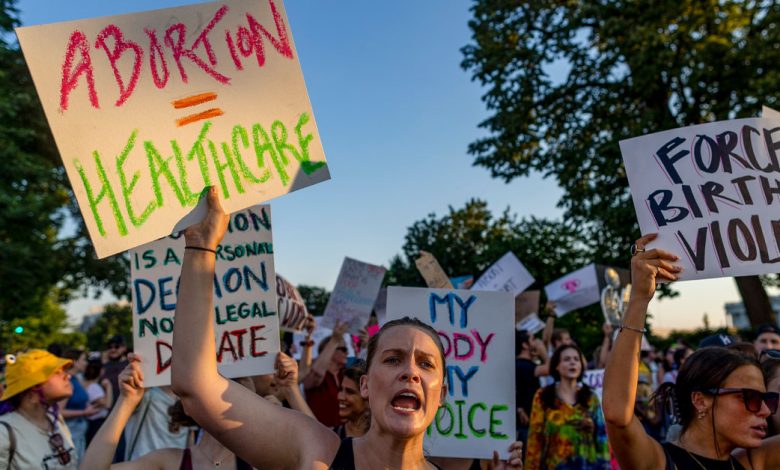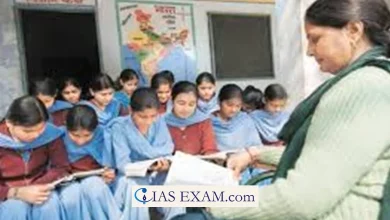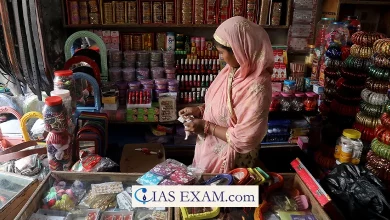SC’s divided views on Abortion: A Complex Legal Dilemma
[GS Paper 2 - Governance, Health & Education]

Context – A Division Bench of two judges of the Supreme Court grappled with divergent views regarding the abortion of a 26-week pregnancy and the government’s stance to protect the “unborn child.” The judges, unable to reach a consensus, opted to refer the case to the CJI to convene a three-judge Bench for further deliberation.
The issue of abortion has long been a contentious and emotionally charged topic in many societies. In the United States, the legal landscape surrounding abortion has been a subject of intense debate for decades. The recent divisions within the Supreme Court over abortion rights have once again thrust this complex legal dilemma into the national spotlight.
Historical Context
- The landmark case of Roe v. Wade in 1973 established a woman’s right to choose abortion as a fundamental constitutional right.
- However, this right has faced numerous challenges over the years, leading to a constant legal tug-of-war between pro-choice and pro-life advocates.
- The crux of the debate hinges on the balance between a woman’s right to control her body and the state’s interest in protecting potential life.
- The Supreme Court has been the ultimate arbiter in striking this balance.
Government Stance and the Legal Debate
- Legal Argument: The Additional Solicitor General contended that the woman did not possess an “absolute right of autonomy” to exercise her reproductive rights in a manner that would compromise the rights of the unborn child.
- MTP Act of 2021: Reference was made to the Medical Termination of Pregnancy (Amendment) Act of 2021, which extended the abortion deadline to 24 weeks in “exceptional circumstances,” primarily to save the mother’s life or in the case of fatal foetal deformity.
- Bodily Autonomy vs. Foetal Rights: The core of the debate centered on whether, once a viable baby exists, the woman’s right to bodily autonomy or integrity should yield to the Act, curbing her fundamental right to choose.
- Court’s Earlier Decision: On October 9, the Bench had initially permitted the medical termination in line with the woman’s wishes, following a report from an All India Institute of Medical Sciences (AIIMS) medical board.
Broader Implications
- The division within the Supreme Court over abortion rights has significant implications for the Indian legal landscape and society. First and foremost, it affects women’s reproductive rights and their access to safe and legal abortion services.
- A strict interpretation of the MTP Act can limit women’s choices and hinder their ability to make decisions about their own bodies, potentially forcing them to seek unsafe, illegal abortions.
- The division also brings to the fore the need for legislative clarity and possible amendments to the MTP Act. The law, enacted in 1971, may not adequately address the complexities of modern healthcare, advancements in medical technology, and evolving societal norms.
- Revisiting and amending the MTP Act to provide a more comprehensive framework that accommodates the diverse circumstances women may face is a pressing issue.
- Moreover, the division reflects the larger societal and cultural diversity in India, with varying perspectives on issues like abortion rooted in different religious and cultural traditions.
- The Supreme Court’s role in shaping abortion policy has the potential to influence the national discourse on this issue, impacting not only legal rights but also social and cultural norms.
Way Forward
The Supreme Court’s division on abortion rights in India highlights the complex legal and ethical dilemmas surrounding this issue. The Court’s decisions have far-reaching implications for women’s rights, public health, and the broader legal landscape of the country. As India grapples with the evolving dynamics of reproductive rights and healthcare, it is crucial for the Court to strike a balance between the legislative intent of the MTP Act and the diverse needs and circumstances of Indian women. The nation looks to the judiciary to navigate this complex and sensitive legal terrain, ensuring that women’s reproductive rights are upheld and protected.
SOURCE: The Indian Express





.png)



